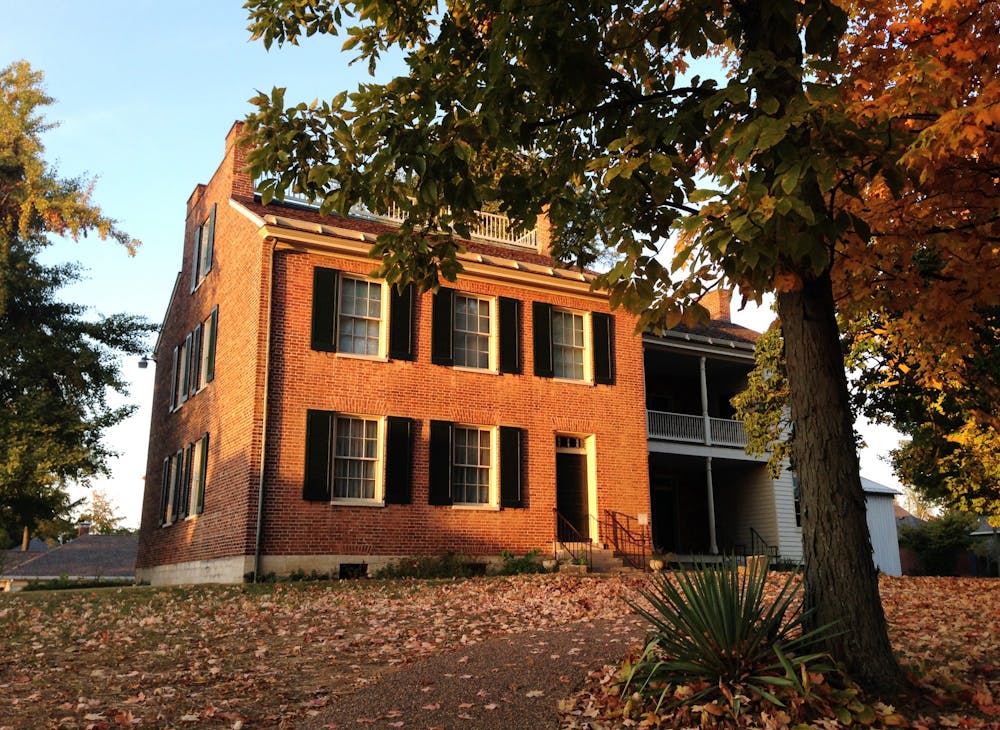Last fall, Carey Champion, director of the Wylie House Museum, commissioned eight artists to create artwork that symbolizes the lesser-known people that lived in or passed through the Wylie House, including women, members of the LGBTQ+ community and people of color.
Today, the exhibition, “Call and Response: Creative Interpretations of Wylie House,” is open to the public as a part of Indiana Remixed sponsored by the Arts & Humanities Council. The artwork is displayed throughout the home, the artists drawing inspiration from different aspects of the house. The exhibition will run from March 5 to Sept. 12.
Champion has been the director of the museum for seven years. She said she has always been interested in adding contemporary pieces to the house, so she came up with the call and response exhibition. The idea was to call out to artists, have them come in and look at the house and create works based on it.
“I didn’t want to tell them what to create, and I also didn’t want them just to bring pieces that they already had,” Champion said. “The idea is that it would be original works specifically in response to the house and its history and then more specifically to the people whose stories we know less about.”
You must first understand the history of the home to understand the meaning behind the exhibition, Champion said.
The house was built in 1835 by former IU President Andrew Wylie, where he and his wife Margaret raised 12 children. After their deaths, the house was sold to Theophilus Wylie, an IU professor and Andrew’s half-cousin. Theophilus and his wife Rebecca had eight children.
The second Wylie family had a domestic servant, Elizabeth “Lizzie” Breckenridge, who worked for the family from age 13 to 67. Her relationship with the family was unusual, as she was a black woman who was paid by the family and had a close relationship with them.
One of the artists, Joann Quiñones, took a particular interest in Lizzie. Quiñones created several pieces centered around Lizzie, including a broom, a memory jug, dolls and a quilt, all objects that represented Lizzie and her relationship to the Wylies. Her collection is titled “Seeing Lizzie.”
Other artists took interest in the children or the grandchildren. Artist Molly Evans was intrigued by a series of letters spanning 25 years, from 1925-1950, between Elizabeth Bishop, future poet laureate, and Louise Bradley, the great-granddaughter of Rebecca and Theophilus. Bishop was a lesbian, so many believe that Bishop and Bradley had a secret romantic relationship. Evans had members of the LGBTQ+ community read the letters aloud. As part of Evans’ exhibit, you can pick up an old telephone and listen to the letters.
Lecturer in fibers Carissa Carman was one of the artists commissioned for the project. Carman’s artwork is a sculptural quilt that hangs above two twin beds in one of the children’s rooms. The quilt can function as a blanket, a tent or a fort.
Carman said she was inspired by the forgotten children that lived in the house, incorporating the sounds of children playing into her exhibit to bring life into the room.
“Because there’s not actually a lot of archives of what happened in these children's rooms, I am really getting to reimagine what happened in these spaces,” Carman said.
Joe Hiland, associate director for the Arts & Humanities Council, said the exhibition is about taking the old traditions and perceptions of the Wylie House and remixing them by bringing in contemporary artists.
“The purpose of call and response is to elevate and highlight some of the stories of underrepresented people who lived at the Wylie House, worked at the Wylie House or otherwise contributed to the early history of IU,” Hiland said.
Hiland said the exhibition also serves to make the house feel like a living space, not just a museum. He wants the exhibition to help people understand that history is more complex than most of us think.
“IU’s history and Indiana’s history in general is filled with the stories of white men, but not often with the stories of other people who contributed to our state and our university’s culture,” Hiland said.
Champion said there will be artist talks and hands-on workshops in the coming months. She encourages people to come to learn more about the history of IU and those who might be forgotten in that history.
“You could come to learn about the history of the house and the Wylies,” Champion said. “Or you could come just for the art.”






